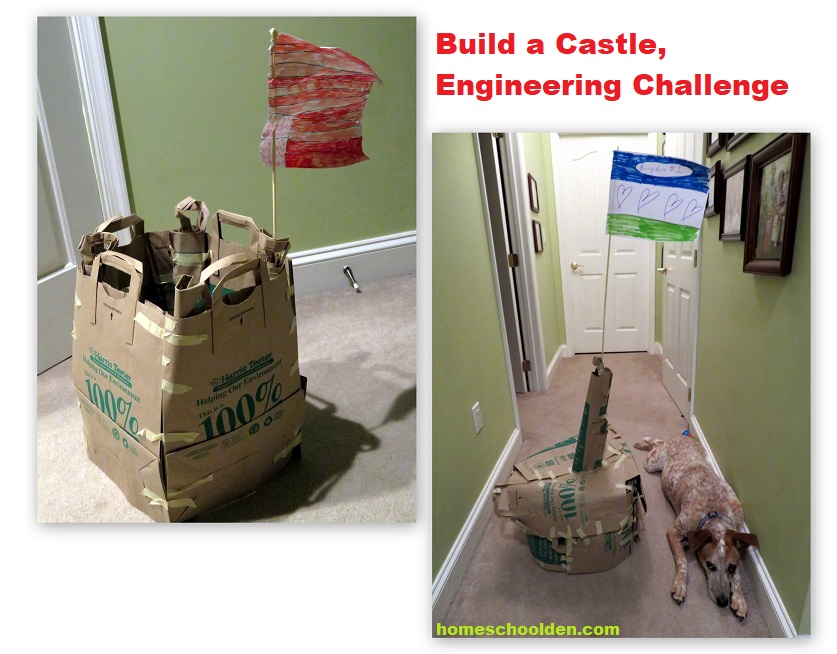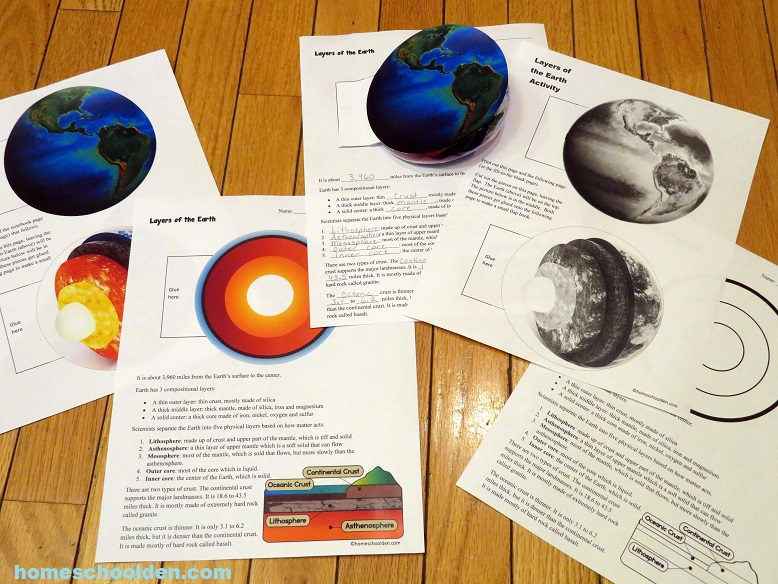Science Club!
If you’ve been following our blog for a while, you know that we really love science! This year we’re doing something a little different. We opened our home for a weekly science club for some other homeschoolers in our area. We have 10 kids, the same ages as my kids (who are 9, 11, 14) — and we’ve been having a blast so far!
Before I share some of the things that we’ve been doing, I want to explain how/why it came about! At the end of last school year, a couple of homeschool families that we were close to moved away. 🙁 You know how that can leave a bit of a hole, right? As I was mulling over what I wanted the kids to cover, I felt that the girls could really use some review of Earth science. That is a very hands-on, fun unit. And, since I feel really comfortable with the material I began to consider bringing in a few other kids to do that with us. I wanted to do some biology units (taxonomy and a bit about the digestive system other critters as well as the human digestive system)… and those also seemed like they would work well with a small group.
I talked about it with the kids and they liked the idea. So, I posted a quick note in a private local group I’m in – and the spots were full in 45-minutes! Thus, the science club was born! We meet once a week (at our house) for an hour-and-a-half.
Today I thought I’d share a few of the things we did so far! Maybe your kids will enjoy these activities as well!
All three of my kids are participating, though my oldest is in 9th grade and he is doing a full-year physics class as well. Also, we spend time during the week going over some of this material in more depth on our own since I want my kids to know things deeper/better than a once-a-week club meeting will allow. (Thus, I have a full packet of materials that I’m making about classification and taxonomy.)
Science Club, Week One:
As the kids started arriving, I had them all glance into a microscope, write their name on a name tag (which had different symbols on them to split them into groups later), and decorate a paper for the front of their science notebook. They also had to decorate the outside of a paper cup with their name. Then we all sat in a circle in the living room.
We introduced ourselves and then we talked about what characteristics make a good scientist. I let them brainstorm and jotted their ideas down. I made sure that someone had mentioned “observant.” Then I had them draw in the microscopic organism that they had glanced at when they first came in. 🙂 I had them discuss with their neighbor what they thought it was and then we talked about it as a group. It was a fly’s head!
Next, the kids were split into three groups (with 3 or 4 in each group). The kids looked at their name tags and got together with kids who had the same color dot on their name tag.
They then did a quick engineering challenge. I told them they had 15 minutes to build a castle. Their supplies included paper grocery bags, masking tape, a wooden dowel, a piece of paper and markers.
That was a fun ice-breaker as the kids started to work together. (Many of the kids didn’t know one another.) After they were done, I had them all try to say something nice about the other groups’ castles.

Earth Science

In their small groups, I had them discuss among themselves a few questions: How far do you think the deepest hole is that we’ve ever dug? (12.3 km – a Borehole in Russia) How deep is it that lava melts? (The lava that spews from volcanoes first melts just a few hundred kilometers down.) and finally, Where do diamonds form (remember that they need extreme heat and pressure) (Rocks less than 500 km deep). They thought that was pretty interesting after talking about how many miles across the inner and outer core, mantle and crust are!
I thought they might enjoy doing the layers of the Earth activity. I had made a TON of play dough the night before to prepare enough for 10 kids to do their own Earth ball! My kids have done this several times now, but most of the kids in our Science Club hadn’t. They seemed to have enjoyed this! 🙂

You can read more about these pages below and at this link 100+ page Earth Science Packet.


Biology
We were short of time this first week, so we talked *really* briefly about scientific classification (taxonomy). We talked briefly about kingdoms, phylums, class, order, etc… but since we were running low on time we jumped right into our observations on mealworms!
Each student had a cup with their name on it (from when they first arrived). They got a paper plate and a spoon and had to observe and draw their mealworms. They created a small habitat for their mealworms with oatmeal and each student placed 6 mealworms in their cup. Then we put those cups into a plastic bin for the next club meeting! (Cool things happened by the time the 2nd meeting rolled around!)
That was the first Science Club meeting! My kids had fun – I’m hoping the others did too!
Here’s the post about our 2nd Science Club Meeting: Science Club: Week Two (plate tectonics; taxonomy + mealworms and flatworms!)
In this second week we did a plate tectonics puzzle, a Pangaea flip-card activity, did an activity about the movement of the plates, talked about scientific classification and taxonomy (domain, kingdom, phylum, etc.) and did some more up-close and personal observations of mealworms and flatworms!
See the other Science Club weeks here:
- Science Club Week 1: Characteristics of Good Scientists, Layers of the Earth
- Science Club Week 2: Plate tectonics, taxonomy, mealworms and flatworms
- Science Club Week 3: Taxonomy and Classification, Engineering Challenge
- Science Club Week 4: Understanding Convection Currents, Taxonomy, Engineering Challenge
- Science Club Week 5: Earthquake Vibrations, Platyhelminthes – Annelids (flatworms and earthworms)
- Science Club Week 6: Earthquake Waves (Body and Surface Waves);
- Science Club Week 7: Plate Boundaries, Observation and Dissection (Crabs – Clams/Oysters)
- Science Club Week 8: Convergent Boundaries, Observation and Dissection (Fish)
You might be interested in finding out more about our Earth Science Packet. It is now over 100-pages of activities and notebook pages. 🙂 I’ve added quite a number of new pages (even in the past week!) as we cover slightly different things in this unit this time around!

Classification and Taxonomy Packet
Our Classification and Taxonomy Packet is now available! It covers a little bit about the history of classification and Linnaeus’ role in creating the first scientific classification system. It goes over the current thinking on the taxonomic groups: Domain, Kingdom, Phylum, Class, Order, Family, Genus, Species. My kids are learning about 10 of the Animalia phyla. They’ll be learning those in quite some depth. This packet has a number of activities and games to help them learn those (in a fun way!).
We’ll be making observations and doing hands-on activities to go along with this unit. We’ll watch the mealworm life cycle unfold. We’ll observe life flatworms (platyhelminthes phylum) called planaria under the microscope and see if they regenerate. And, we’ll also do some dissection.
What is taxonomy and why do we need to study it?! Taxonomy is the science of classification. Our biosphere supports more than 7 million known species and probably 4 or 5 million more unknown species! Taxonomists work on organizing the vast quantity of species. They are continually updating the classifications to keep up with new research and new discoveries.
What is in the Scientific Classification and Taxonomy Packet?
As we started off this unit, we started off by talking about why we classify things. We learned about the dichotomous key and did a number of activities to understand how they work. We talked about why classification is useful and how we can do that in a way that is organized and logical.
Then we went into more detail about the history of classification. Scientists have been grouping and categorizing different species for most of human history. In the past 300 years or so, scientists have worked on developing a logical, organized system for classifying the species around us.
All living organisms are classified by their characteristics. We keep adding to and adjusting the classification system as new evidence become available through DNA research and molecular studies! We talked about Linnaeus and his contributions to the classification of animals and his system of naming organisms (binomial nomenclature).
We talked about the current system of classification and by the end of the unit, the kids were readily able to identify the types of organisms that have been classified as Bryozoa, Platyhelminthes, Porifora and other phyla in the Animalia Kingdom.
We did a number of hands-on activities studying and observing various species and even did some simple dissections at the end of the unit.
See you again soon here or over at our Homeschool Den Facebook Page! Don’t forget to Subscribe to our Homeschool Den Newsletter. You might also want to check out some of our resources pages above (such as our Science, Language Arts, or History Units Resource Pages) which have links to dozens of posts. You might want to join our free Homeschool Den Chat Facebook group. Don’t forget to check out Our Store as well.




























































